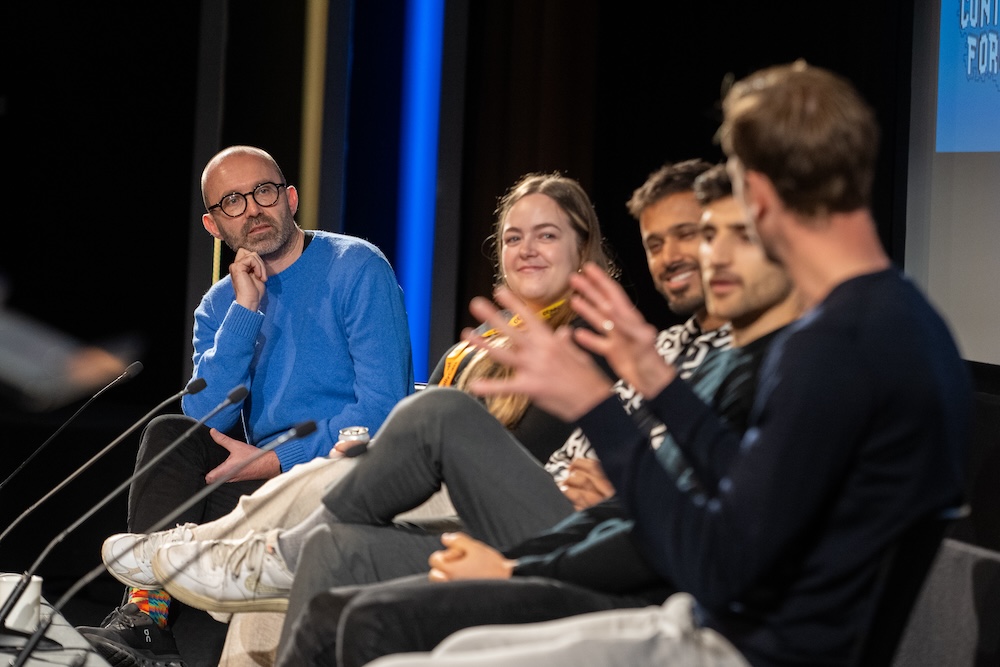The TellyCast Digital Content Forum recently brought together some of the sharpest minds in digital documentary production for the Digital Docs panel, held at the iconic BFI Southbank in London. Sponsored by Quintus Studios and moderated by Creatorville’s Sam Barcroft, the Digital Docs panel featured industry leaders who shared insights into building thriving digital-first documentary brands. Each panellist offered a unique perspective on navigating the fast-evolving digital landscape, providing valuable lessons for those looking to succeed in the field.
Carving Out a Niche: The Key to Standing Out
Each panellist emphasised the importance of niche content as a foundation for success in digital documentaries. Serena Jones from B1M has successfully positioned her YouTube-first channel as the go-to destination for content on the built environment, covering architecture, construction, and skyscrapers. Her strategy is rooted in becoming an expert voice within a specific field, allowing B1M to attract a dedicated audience while also drawing in brands eager to reach that niche. This approach highlights the importance of authenticity and trust, especially when working with technical content where the audience expects in-depth knowledge.
Quintus Studios’ CEO Gerrit Kemming shared similar insights, explaining how they have leveraged their expertise to create highly engaging factual content for YouTube and beyond. Quintus Studios initially created content for traditional broadcast but has since flipped the model to focus on digital-first distribution, with TV licensing as a secondary revenue stream. Gerrit’s approach illustrates the potential of building a niche brand that can succeed across both digital and linear channels, especially as platforms look to fill content gaps in traditional television.
Using Digital Tools to Engage Hard-to-Reach Audiences
Yusuf Omar from Seen.TV is another standout example of using niche content to reach specific demographics. Seen.TV’s focus on “stigmas and taboos”—from mental health to unique health conditions—has allowed the platform to build a devoted following, particularly among young women aged 13 to 24. Yusuf’s network of “mojos” (mobile journalists) produces short, impactful stories on topics that larger media companies often overlook. His success shows the value of leaning into underrepresented topics and capturing stories in a way that feels personal and relevant to audiences.
As Yusuf explained, the engagement from these niche audiences translates directly into revenue. While Seen.TV has historically relied on programmatic ads, they’re now seeing success with a membership model. By providing stories that resonate deeply with a unique audience, they can foster a sense of community, which in turn leads to direct audience support. This model opens up new possibilities for digital content creators who want to avoid reliance on algorithms and instead build a more stable and loyal viewer base.
Building Flexibility into Revenue Models
For Ben Zand from Zandland, flexibility has been essential to building a sustainable digital documentary business. Zandland produces everything from short digital videos to long-form streaming content, often self-funding and then seeking distribution through various channels, including streaming platforms and brand partnerships. Ben’s approach reflects the changing nature of content consumption, where ideas can be scaled up or down depending on what works best for the audience and platform.
Ben explained that Zandland’s key selling point is access—getting unique stories from voices and perspectives not commonly seen on mainstream media. This approach has led to partnerships with brands looking for authentic, on-the-ground storytelling, allowing Zandland to monetise in ways that were previously the domain of traditional broadcasters. Ben’s example highlights the need for today’s digital producers to be adaptable and open to different types of funding models, from brand sponsorships to platform ad revenue.
Reducing Costs While Maintaining Quality
A recurring theme across the panel was the challenge of balancing production costs with the need for quality content. Quintus Studios, for example, has mastered a lean production model that enables them to create high-quality documentaries at a fraction of traditional production costs. By working with a network of independent filmmakers worldwide, Quintus can keep production budgets low without compromising on quality. Gerrit noted that this approach is essential for digital-first content, where ad revenue may not be as high as traditional broadcast budgets.
Looking Ahead: Opportunities for Growth
With the rise of digital platforms, there has never been a better time for niche documentary creators to thrive. As traditional broadcasters scale back their content budgets, digital-first producers have the opportunity to step in and meet audience demand. The panelists all expressed excitement about the potential of digital documentaries to reach audiences that mainstream media misses, particularly as more viewers seek authentic, raw content.
The Digital Docs panel at the TellyCast Digital Content Forum made it clear: successful digital documentaries are built on niche expertise, audience trust, and innovative revenue models. For emerging producers, the key takeaway is to build genuine connections with underrepresented audiences, maintain flexibility in funding, and leverage the efficiency of digital tools and lean production methods. As the media landscape continues to shift, those who adapt quickly and invest in their niche will find themselves well-positioned for future growth.





